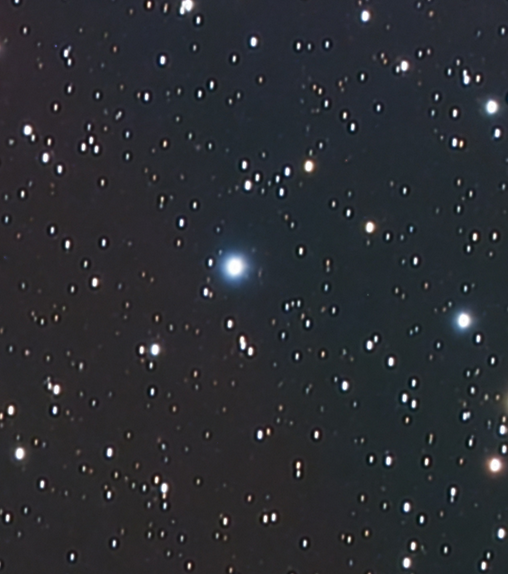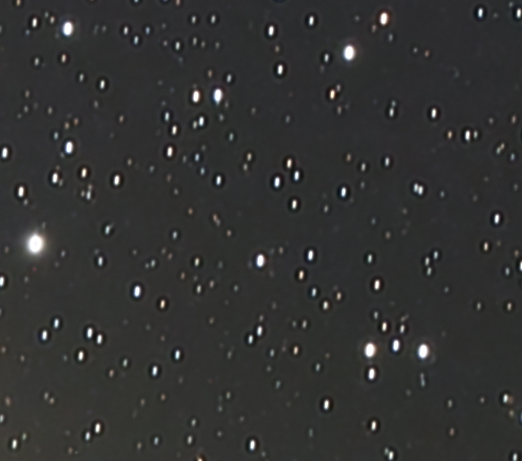[RCC] Andromeda Galaxy
12 replies•429 views
akshay87kumar Topic starter
Oct 25, 2024
Jean-David Gadina:
You got this result with that few data?
What equipment did you use?
It is from the Utah Remote Observatory. Hence the quality
Can you tell us, what equipment you used?
I'd say considering it's only 36 min, it's pretty good. But I think the color balance is off, how did you calibrate it? Also, all the stars have a black ring around them, so something went wrong there.
I'd say considering it's only 36 min, it's pretty good. But I think the color balance is off, how did you calibrate it? Also, all the stars have a black ring around them, so something went wrong there.
Concise Engaging
Tony Gondola Frequent contributor
Oct 25, 2024
The color balance is a bit off. You need to balance out that green. Hard to say much more without know what hardware was used to produce it.
HR_Maurer IOTD Staff
Oct 26, 2024 · Edited: Oct 26, 2024
There's a reddish tint at the top edge if the image. It looks like a gradient residual first, but further to the right it suddenly turns right and runs across the image.
What i like is the missing of the typical Andromeda gradient-artifact ~90% of all Andromada Galaxy images have - when the complete galaxy sits within a dark donut, resulting from improper processing

What i like is the missing of the typical Andromeda gradient-artifact ~90% of all Andromada Galaxy images have - when the complete galaxy sits within a dark donut, resulting from improper processing

akshay87kumar Topic starter
Oct 26, 2024 · Edited: Oct 26, 2024
There's a reddish tint at the top edge if the image. It looks like a gradient residual first, but further to the right it suddenly turns right and runs across the image.
What i like is the missing of the typical Andromeda gradient-artifact ~90% of all Andromada Galaxy images have - when the complete galaxy sits within a dark donut, resulting from improper processing
I am very new to astro post processing, so I may not have complete context. When I used background removal in pixinsight (either using dynamic background extraction, automatic background extraction, setiastro - which ever method I tried, and however accurate I tried to be with the placing of squares/sizes/thresholds), I would have that donut which you are talking about. SO i ultimately gave up and did not bother with the background extraction in pixinsight. Moved straight to spectrophotometric color calibration, noise removal, followed by histrogram stretches, masked adjustments, etc. I did try deconvolution, maybe that is why the stars have black edges around them?
That is why the gradient still shows up.
akshay87kumar Topic starter
Oct 26, 2024
Hello. Did you happen to pass a layer of UnsharpMask? There seems to be some ringing around some of the stars.
Anyway, amazing result for 36 min of data.
Could it be because I tried to do deconvolution almost somewhere in the later stages of my workflow? I also did contrast adjustment, but that is unlikely to cause the ringing?
akshay87kumar Topic starter
Oct 26, 2024
Tony Gondola:
The color balance is a bit off. You need to balance out that green. Hard to say much more without know what hardware was used to produce it.
I did run spectrophotometric color calibration of the stars at the start of my workflow. Although later in the stages I did an arcsin stretch (or SetiAstro star stretch - which i belive is same as arcsin stretch?) I did not do any other histogram stretches on the stars. Towards the end of workflow, I did bump up the saturation stars (equally for all colors - just levelled up the colour saturation up evenly instead of any selected curves.
The telescope is 11" (280 mm), F2.2 RASA astrograph + CMOS ZWO ASI2600 Color.
Helpful
Tony Gondola Frequent contributor
Oct 26, 2024
You really can't consider the image that comes out of any stacking software finished. To make the final adjustments most of us will go to a layer based photo editor like Photoshop, Gimp, Affinity Photo and others. Take your choice and learn how to use it. My recommendation would be Affinity Photo. You'll be amazed at how much power this gives you and how easy it is to make the changes you need.
Well Written Concise Supportive

